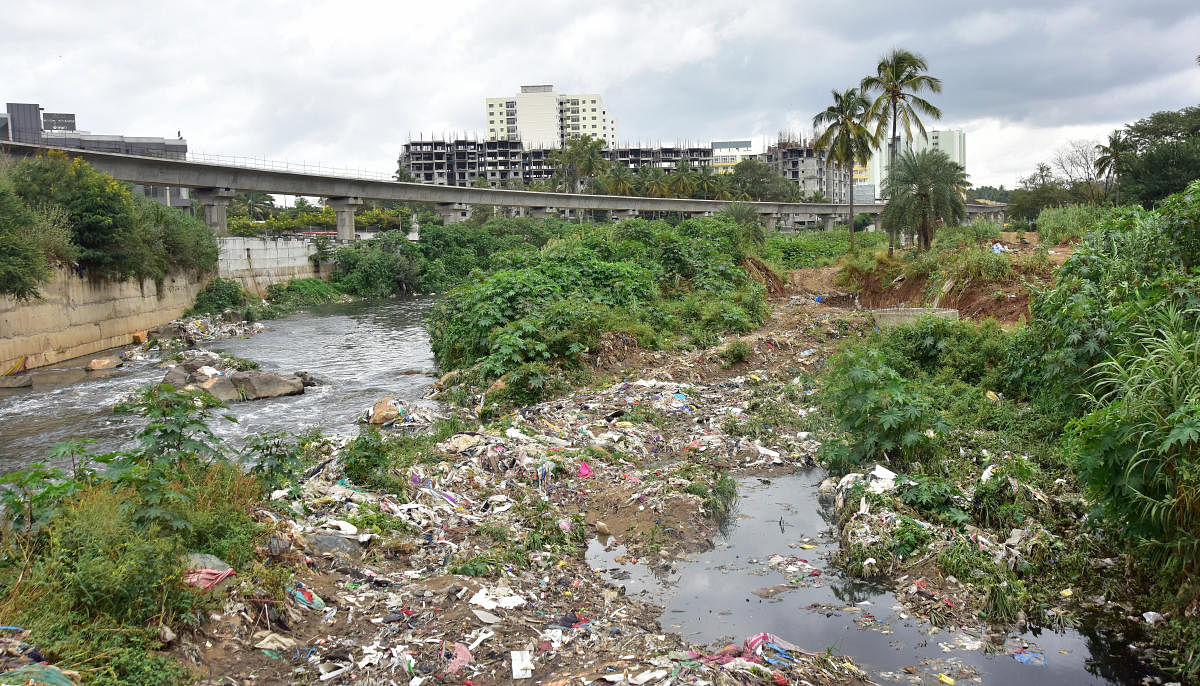

Vrishbhavathi, the lone river that takes birth in the city of Bengaluru, has been degraded, disregarded, disrespected and misused to be recorded as a drain instead of a major river tributary of Arkavathy river, which joins River Cauvery.
For more than 50 years, many of the industrial areas on its catchment area like Peenya, Yeshwanthpura, Rajajinagar, Kumbalagou, have been discharging effluents. Diversion of domestic sewage and underground drainage into the
Vrishbhavathi are other major sources of pollution.
The catchment area starting from Peenya and the whole of West Bengaluru including Sankey tank and Basavanagudi has been in news because of wrong reasons: Karnataka State Pollution Control Board (KSPCB) taking few steps and the high court issuing orders to control the pollution.
The fact that the water of Vrishabhavathi contains a lot of industrial effluents has been established for long from the water quality data available from KSPCB itself. In addition, studies by premium research institutes such as ATREE have also confirmed it.
A majority of the dumping of waste happens in the wee hours, under the cloak of darkness. and clearly shows that the act is intentional, and aims to evade detection by KSPCB and BBMP.
Just a few kilometres downstream, the same waters are used for farming and cattle. ATREE research has found heavy metals in milk and vegetables grown in this area. The food contaminated with heavy metals is supplied to all parts of the city. Thus people of the city are also affected by the industrial pollution in Vrishabhavathi. Heavy metals in the food lead to health consequences, such as a much higher incidence of kidney trouble and heart ailments.
The sole responsibility of this man-made disaster squarely falls on the shoulders of KSPCB, the sole agency that approves industries and gives consent to operate.
The KSPCB has allowed industries to have their own effluent-processing plants or to have contracts with third parties. Use of Central Effluent Treatment Plants (CETP) is also allowed.
In addition, KSPCB is supposed to regularly conduct audits to ensure that all industries are operating as per approved conditions. Under the Water Act 1974, KSPCB is supposed to find ways to treat pollution and educate the public to adopt them.
Thus, KSPCB has a duty not only to analyse to pollution but also take proactive steps to prevent pollution. Sadly, KSPCB has miserably failed to fulfil this duty. As a result, the river can be considered dead. In fact, even the revenue records have denigrated the river to the status of a nalla (drain).
It is disheartening to see that the KSPCB continues to ignore citizen efforts to save the river and continues to allow violations. Let us pray that with this collective effort, the river is brought back from the dead.
(Ramprasad V is co-founder of Friends of Lakes; Nagesh Aras is a member.)